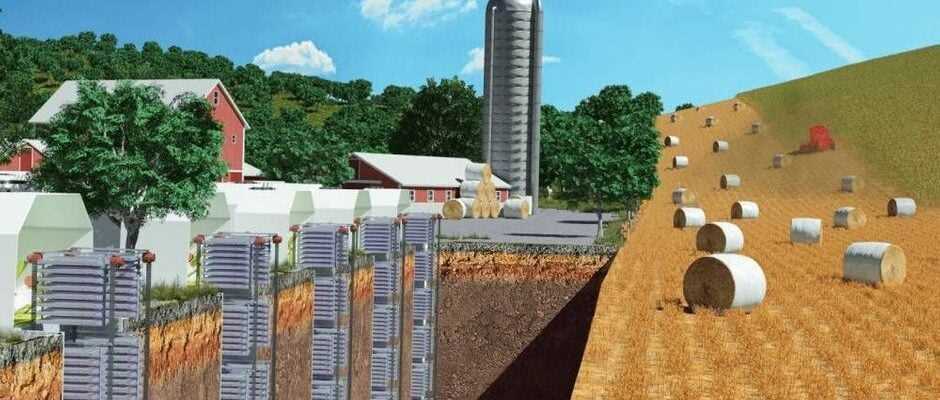Less space, water, energy and materials: the challenge of underground farming!
How it works ?
The GreenForges team designs the farm according to the wishes of the customers. Then, underground wells are drilled and filled with various modules that contain hydroponic equipment, light sources, sensors and fans. Then we proceed to the installation of the surface elements. From then on, the farm is ready to be exploited. All you have to do is put the little shoots in the modules, which go underground to meet the ideal environmental conditions for their growth, for the moment 30 meters underground. The next generation will descend to 100 meters.
Why is it good?
These “forges” are adaptable. They can be installed almost anywhere: in deserts, tundra, in the mountains, under buildings or next to them… In many cases, this technology makes it possible to take advantage of places that would otherwise remain unused. You could say that these forges generate space.
For the same output as vertical trusses, forges require less building materials, and less water, as it is filtered and continuously recycled through the system.
GreenForges require 98% less water compared to traditional crops. © DR
Also read.Sundrop, the tomato farm in the middle of the desert
“A prototype in March 2022”
Philippe Labrie, founder of GreenForges
Paris Match. How much does it cost to install an underground truss?
Philippe Labrie. Building and operating these farms will not cost the same in New York as it does in Singapore, due to local economic variables such as the costs of drilling, labor or electricity, for example. However, for commercial installations in North America, the initial costs are expected to be around $ 25 per kilogram that the facility will produce annually. For example, building a farm using “forges” to produce 900 tonnes of lettuce per year would cost around $ 25 million. By comparison, an indoor vertical farm that produces that much would cost around $ 39 million. The break-even point per kilo should be between that of greenhouses and that of vertical farms.
When will the first underground farm appear?
We are planning the construction of a pilot structure in Quebec. It will be used as a research and development facility, primarily to expand the range of possible crops. Construction is expected to begin in March 2022.
Any reproduction prohibited
